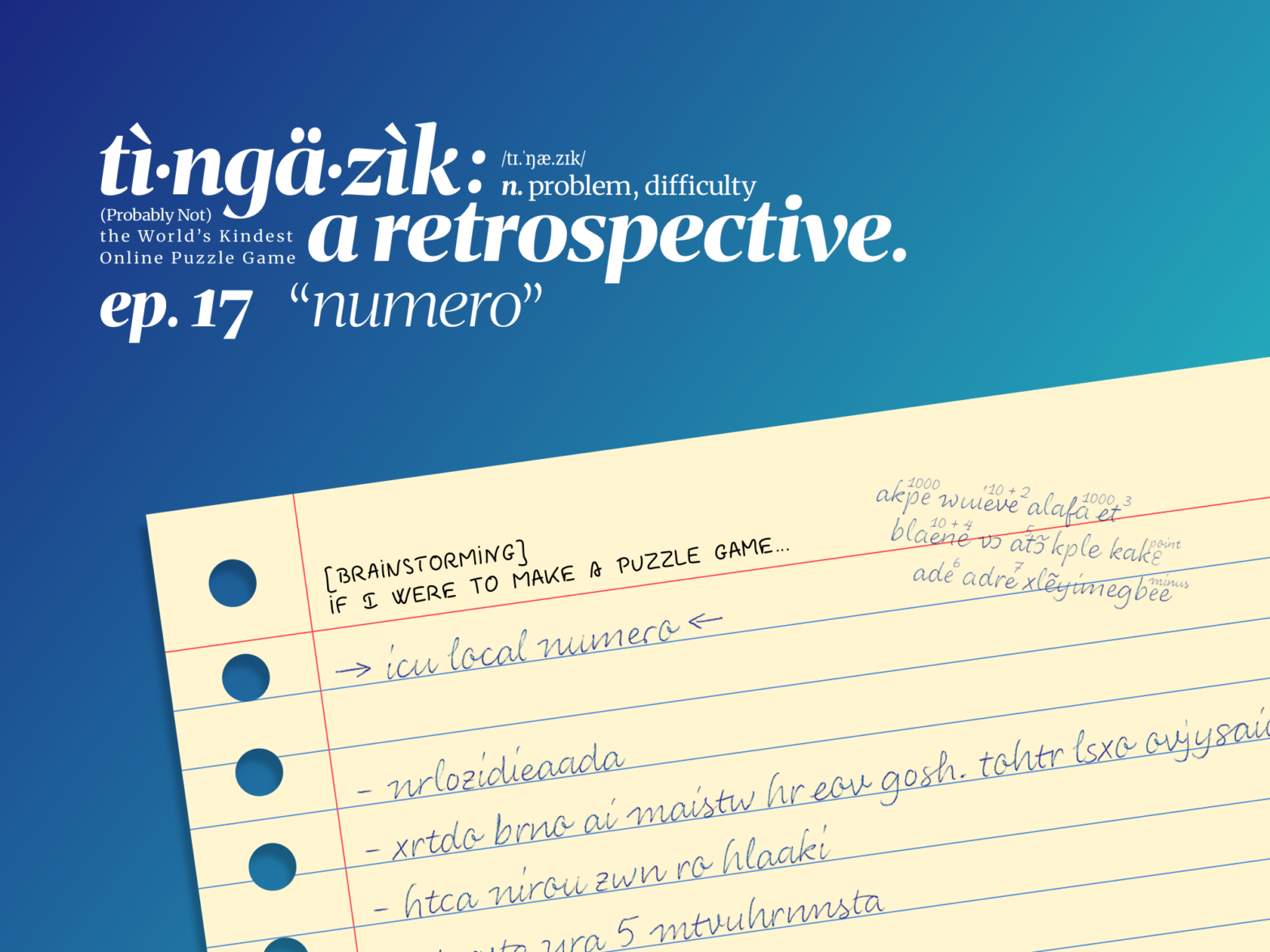Numero #unicode
Expected solvable difficulty
nohint+: experienced solverskeywords+: most solvers
Level design
Concluding this chunk of Unicode questions, this one is inspired from a rather lesser known component of Unicode, the International Components of Unicode (ICU). ICU is a software and a dataset that works with various features of languages, including code page conversions, collations, number/date/time/currency formattings, text boundaries and bidirectional text calculations.
This question is focused on the ICU online demo numero that converts decimals into words in different languages. Languages are chosen such that no major online automated translator is available, and no language resource online is available for numbers. A list of languages are shortlisted when designing the question: Chakma (ccp), Cherokee (chr), Ewe (ee), Fula (ff), Faroese (fo), Kalaallisut Greenlandic (kl), Quechuan (qu), and Northern Sami (se). In the end, Cherokee and Ewe was chosen for the actual question.
English and Chinese (Traditional) are chosen as two more samples to let the solvers know the meaning of the questions. Numbers themselves are completely random without a particular meaning.
Here is a peek of how -12345.67 look like in the shortlisted languages:
- ccp: 𑄜𑄢𑄧𑄇𑄴 𑄝𑄢𑄳𑄦𑄧 𑄦𑄎𑄢𑄴 𑄖𑄨𑄚𑄴𑄥𑄧 𑄌𑄣𑄨𑄨𑄌𑄴 𑄛𑄌𑄴 𑄜𑄪𑄘𑄮 𑄍𑄧 𑄥𑄖𑄴
- chr: ꭺꮳꮄꮝꮧ ꮤꮅꮪ ꭲꮿꭶᏼꮅ ꮶꭲ ꮝꭺꭿꮵꮖ ꮕꭹꮝꭺ ꭿꮝꭹ ꭺꮝꮣᏹ ꮡꮣꮅ ꭶꮅꮙꭹ
- ee: akpe wuieve alafa etɔ̃ blaene vɔ atɔ̃ kple kakɛ ade adre xlẽyimegbee
- ff: minus ujunere sappo e ɗiɗi e temedere tati e cepanze nawi e jowi poofirgel jeegoʼo jeeɗiɗi
- fo: minus tólv tusin og trýhundraðogfýratifimm komma seks sjey
- kl: minus aqqaneq-marlunnik tuusintillit pingasunik uutritillit sisamanik qulillit tallimat komma arfinillit arfineq-marluk
- qu: minusu chunka iskay-ni-yuq waranqa kinsa pachak tawa chunka phisqa-yuq comma suqta qanchis
- se: eret guoktenuppelohkáiduhát golbmačuođinjealljelogivihtta pilkku guhtta čieža
It is interesting to see that ff, fo, kl and qu all borrowed the word minus from English.
Digging in the ICU/CLDR source, it is not hard to find the exact definition used by the program to produce those numbers. Here is an example in Ewe and a breakdown of the number in the questions.
| akpe bla- vɔ ene adre | 104 × (10 × 4 + 7) |
| alafa asieke | 103 9 |
| bla- vɔ etɔ̃ | 10 × 3 |
| eve | 2 |
| kple kakɛ | . |
| ene | 4 |
| enyi | 8 |
| xlẽyimegbee | – |
| ꮠꮼ ꭲꮿꭶᏼꮅ | 1 × 104 |
| ꮶꭲ ꮝꭺꭿꮵꮖ | 3 × 103 |
| ꮕꭹꮝꭺ | 40 |
| ꭿꮝꭹ | 5 |
| ꭺꮝꮣᏹ | . |
| ꮡꮣꮅ | 6 |
| ꭶꮅꮙꭹ | 7 |
| 一 億 | 1 × 108 |
| 四 千 九 百 五 十 九 萬 | (4 × 103 + 9 × 102 + 5 × 10 + 9) × 104 |
| 七 千 八 百 七 十 | 7 × 103 + 8 × 102 + 7 × 10 |
| 點 | . |
| 七 | 7 |
Expected thought process
Realizing this question is asking to write down the number in the question. Searching for number formatting tool, or some numbers in the question and find ICU. Making use of source code of ICU/CLDR to translate the number back.


Leave a Reply